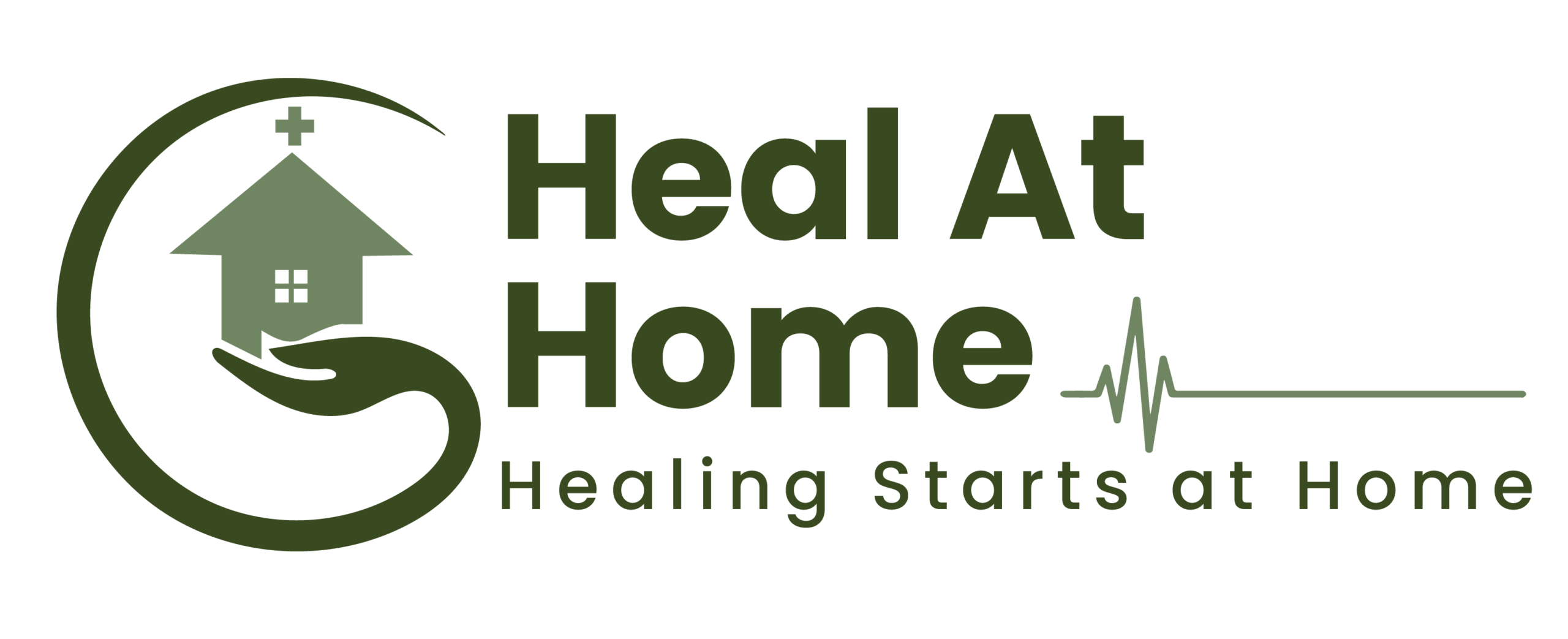
Fueling Your Recovery
Recovering from an illness, surgery, or injury at home requires dedication and the right tools. While medication and rest are crucial, what you put on your plate plays a significant role in how quickly you heal and regain strength. This is where a powerful duo emerges: nutrition and home physical therapy.
Nutrition: The Body’s Building Blocks
Think of your body as a construction site. After surgery or injury, tissues need repair, and your body requires the right materials – nutrients – to rebuild. A well-balanced diet rich in protein, carbohydrates, healthy fats, vitamins, and minerals provides the building blocks for healing.

Fueling Your Recovery
- Protein: Protein is essential for tissue repair and muscle building. Aim for lean protein sources like chicken, fish, beans, lentils, and tofu. Include protein in every meal and snack to support the ongoing process of rebuilding.
One of my favorite lemon chicken recipes from Feel Good Foodie is:
Ingredients:
- 6 6 ounces boneless skinless chicken breasts
- 1/4 cup olive oil
- 1/4 cup lemon juice plus the zest for the lemons
- 2 teaspoons oregano
- 4 garlic cloves pressed
- 1/2 teaspoon salt
- 1/4 teaspoon black pepper
- parsley or cilantro for serving
- lemon wedges for serving
Instructions:
- Pat chicken dry and pound chicken if some parts are too thick. Combine the olive oil, lemon juice, oregano, garlic, salt, and pepper in a bowl or resealable freezer bag. Add chicken and toss well to combine. Marinate for at least 30 minute
- Preheat the grill or grill pan to medium-high heat. Place chicken on the grill for 5-7 minutes. Use tongs to flip over and cook until juices run dry approximately 5-7 more minutes. Discard extra marinade
- Remove chicken from the grill. Sprinkle with parsley and serve with lemon wedges and vegetables, if desired.
- Carbohydrates: Carbohydrates provide energy for healing and physical therapy exercises. Choose whole grains, fruits, and vegetables for sustained energy. Complex carbohydrates provide a slow and steady release of energy, keeping you fueled throughout your therapy session and beyond.
- Healthy Fats: Healthy fats like those found in avocado, nuts, and olive oil support immune function and cell growth. Don’t be afraid of healthy fats – they are essential for nutrient absorption and hormone production.
- Vitamins and Minerals: Vitamins and minerals like Vitamin C, Zinc, and Iron play a vital role in wound healing and immune function. Include a variety of colorful fruits and vegetables in your diet. Aim for a rainbow on your plate to ensure you’re getting a wide range of essential micronutrients.

Fueling Your Recovery
Home Therapy: Putting Your Body Back in Motion
Home physical therapy allows you to recover in the comfort of your own home under the guidance of a qualified therapist. A personalized exercise program, designed specifically for your condition and recovery goals, can help you achieve a multitude of benefits:
- Reduced pain and stiffness: Physical therapy exercises can improve blood flow to the injured area, which can help reduce pain and inflammation. Gentle stretches and mobility exercises can also help to loosen tight muscles and joints, improving your overall range of motion and flexibility.
- Improved flexibility and range of motion: Physical therapy exercises target specific muscle groups and joints to help you regain your full range of motion. This can be especially helpful after surgery or injury, where scar tissue or stiffness may limit your movement. By incorporating stretches and mobility exercises into your routine, you can improve your flexibility and range of motion, allowing you to move more easily and comfortably in your daily life.
- Regained strength and muscle function: Physical therapy exercises challenge your muscles in a controlled and safe environment, helping them to rebuild strength and endurance. As you progress through your therapy program, the exercises will gradually become more challenging, allowing you to progressively overload your muscles and stimulate muscle growth. This is particularly important for regaining strength after surgery or injury, where muscle wasting can occur.
- Maintained or improved balance and coordination: Balance and coordination are essential for everyday activities such as walking, climbing stairs, and getting dressed. Physical therapy exercises can help to improve your balance and coordination by challenging your proprioception (body awareness) and retraining your nervous system to work more efficiently. This can be especially helpful for individuals who are at risk of falls or who have difficulty with balance due to an injury or illness.

Fueling Your Recovery
The Winning Combination: Nutrition & Home Therapy
Here’s why these two elements are a perfect match for faster recovery:
- Nutrition fuels your therapy: Eating a balanced diet provides the energy you need to participate actively in your physical therapy sessions. Proper nutrition ensures you have the reserves to engage fully in your exercises, allowing you to get the most out of your therapy program. For example, ensuring you consume enough carbohydrates can prevent fatigue during exercise, while protein helps repair muscle micro tears that occur during exercise, leading to stronger muscles.
- Therapy maximizes your nutrition: Exercise increases your body’s demand for nutrients, making it even more crucial to focus on a healthy diet. Physical therapy challenges your body, and a nutritious diet provides the building blocks to adapt and grow stronger. Protein is especially important after exercise to aid muscle repair and growth.
- Both promote healing: Nutrition and physical therapy work together to optimize tissue repair, improve strength, and enhance your overall well-being. By providing your body with the right nutrients and challenging it through exercise, you create an environment conducive to healing and recovery. Studies have shown that a combination of physical therapy and a well-balanced diet can lead to faster recovery times, improved strength gains, and better long-term outcomes.
Tips for Success:
- Consult a registered dietitian: They can create a personalized meal plan based on your specific needs and recovery goals. A registered dietitian can also help you identify any nutritional deficiencies that may be hindering your healing process and recommend dietary adjustments to address them.
- Plan your meals: This helps ensure you have healthy options readily available and avoid unhealthy choices when hunger strikes. Planning meals ahead of time reduces the stress of figuring out what to eat, especially on days when you may be feeling more fatigued.
- Stay hydrated: Adequate water intake is crucial for nutrient absorption, healing, and overall health. Dehydration can hinder recovery and make you feel sluggish during physical therapy sessions. Aim to drink plenty of water throughout the day.
- Get a home exercise program: Discuss a home exercise program that incorporates my current progress and goals with your home physical therapist. If you don’t currently have home physical therapy, ask your provider to add that to your home health order.
By prioritizing good nutrition and participating in home physical therapy, you can empower your body to heal faster, regain strength, and get back to doing the things you love. Remember, you are your own best advocate for recovery. Take charge of your health and create a winning combination for a speedy and successful journey back to wellness!

